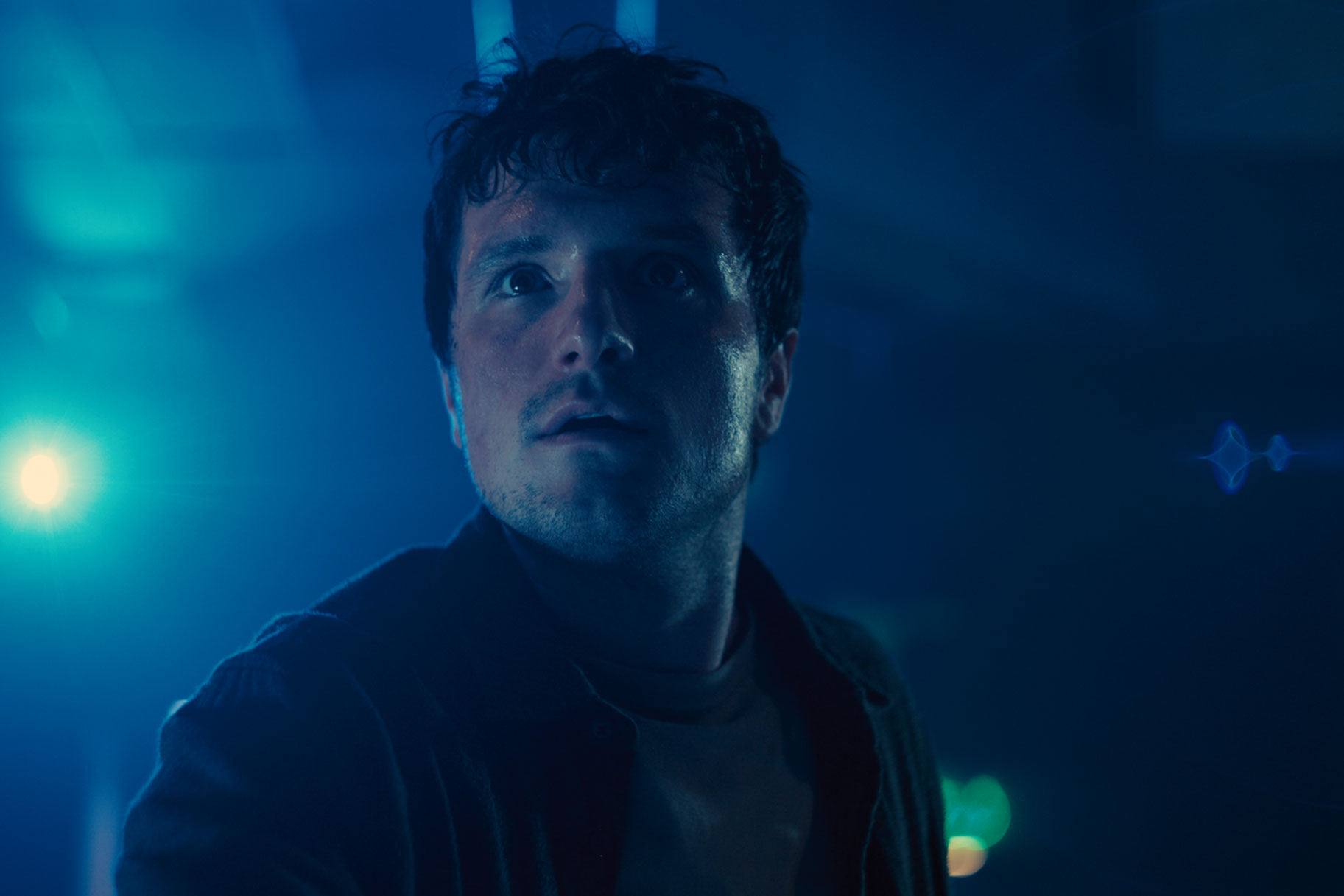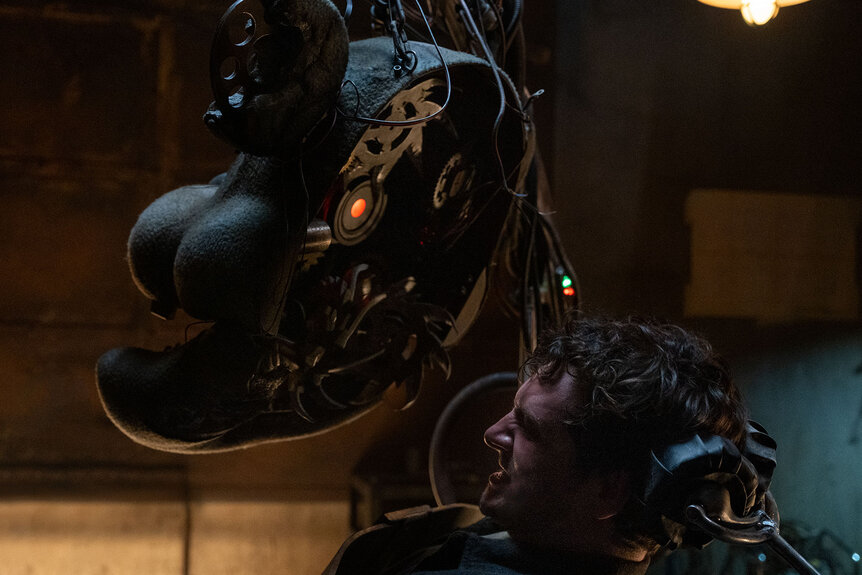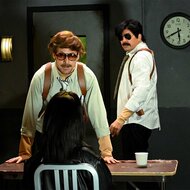Create a free profile to get unlimited access to exclusive show news, updates, and more!
What Is Dream Theory and How Does It Work in Five Nights at Freddy's?
Can you discover the truth hidden in your dreams?

During a family camping trip when Mike (Josh Hutcherson) was a kid, his brother Garrett was abducted in broad daylight, and no one ever found out what happened to him. Years later, after another string of tragedies claimed the lives of both Mike’s parents, he found himself in the tenuous position of caring for his kid sister, Abby (Piper Rubio). But when he sees an apparent kidnapping happening in front of him, Mike’s violent reaction costs his job as a mall security guard and eventually forces him to survive Five Nights at Freddy’s (the new PG-13 horror movie now in theaters and streaming on Peacock!).
Working security at Freddy’s means staying overnight, something Mike initially refuses in order to moonlight in his own self-pity. Every night, Mike pops a sleeping pill, listens to nature sounds, and stares at a poster of a forest until he returns to the memory of the worst day of his life, hoping to see something he had missed before.
How Dream Theory Works in Five Nights at Freddy’s
Despite everything else happening around him — unsteady employment, unpaid bills, and an aunt determined to take Abby away from him — Mike has become obsessed with a book on Dream Theory and its potential to solve the mystery of his brother’s abduction.
RELATED: The Ending of Five Nights at Freddy’s Explained
“And though the dreamer remains asleep, he walks through memory as if experiencing it for the first time anew, no longer a passenger but an active participant.” – Excerpt from the book Dream Theory (fictional).
The basic premise is pretty straightforward if not a little nebulous. Dream Theory, as presented in Five Nights at Freddy’s, suggests that our minds soak up way more detail from our surroundings than we realize. Our memories, from this point of view, are like home movies of our experiences and Mike believes he can revisit those memories in his dreams. If he keeps going back and he keeps reliving his brother’s abduction, eventually he might find some previously unseen detail which will reveal who took him. That’s the idea, anyway.
Granted, things get weird when his dreams are invaded by a group of young children mysteriously connected to the now-abandoned pizza restaurant where Mike works and the slowly decaying animatronic characters who are its only remaining residents.
Is Five Nights at Freddy's' Dream Theory Real?
Mike’s philosophy of solving his brother’s abduction hinges on two central ideas. The first is that he can enter his dreams and exercise a measure of control over them. The second is that memories are reliable records of what actually happened in the past.
That first idea has a flimsy foundation in reality. The ability to know that you’re dreaming, while your dreaming — commonly called lucid dreaming — is a moderately common phenomenon. It’s estimated that about half of the global population has experienced a lucid dream at least once, while a smaller percentage of people have lucid dreams frequently. Roughly 20% of people experience a lucid dream about once a month, while only about 0.1% of people experience them frequently, more than once a week.
There is also some evidence that lucid dreaming can be learned, such that a motivated person could condition themselves to “wake up” inside of their dreams on a regular basis. Score one for Mike. The other part of the Dream Theory equation, however, is a little more difficult to square with reality. Far from being perfect snapshots of what we experience, research demonstrates that memories are squishy and prone to embellishment.
RELATED: Who's Who in the Five Nights at Freddy's Movie Cast?
In fact, a 2013 study published in the journal Psychological and Cognitive Sciences found that false memories are generated at pretty much the same rate, even among people with so-called “photographic memory.” The study focused on individuals with Highly Superior Autobiographical Memory (HSAM) — the kinds of folks who can tell you what they had for lunch on June 2, six years ago — and found that overall, they mixed up memories as often as everyone else. In some tasks, they even performed worse than the control group, suggesting that while their memories may work differently from the rest of the population, it’s far from photographic.
Worse than that (for Mike’s purposes, it’s fine for the rest of us), memories shift and change over time as you revisit them and incorporate new experiences. Mike enters the same memory every night hoping to get nearer to the truth when, in actuality, he’d likely be slipping further toward fiction with each passing night.
Find out if Mike can solve the mysteries of his brother’s abduction and what’s really going on at Freddy Fazbear’s Pizza in Five Nights at Freddy’s, in theaters and streaming now on Peacock.
















